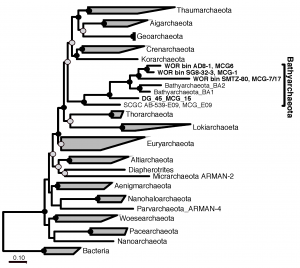Our new paper published in Nature Microbiology, which was a collaboration with the Ettema Lab (Upsalla Univ), and Teske Lab (UNC Chapel Hill), begins to resolve the metabolic capabilities of a group (class) of Archaea (referred to as SAGMEG) that are predominant in the subsurface and have not been cultured. Two of the genomes were recovered from this hot spring in Yellowstone National Park (photo by Dan Coleman).
Two of the genomes were recovered from this hot spring in Yellowstone National Park (photo by Dan Coleman).
Genomic inference of the metabolism of cosmopolitan subsurface Archaea, Hadesarchaea
Press releases about this article.
- New microbes that thrive deep inside Earth discovered (The Economic Times)
- New microbes that thrive deep inside Earth discovered (The Times of India)
- Scientists discover new microbes that thrive deep in the earth (Phys.org)
- New microbes that thrive deep in the earth discovered (Daijiworld.com)
- Scientists discover new microbes that thrive deep in the earth (EurekAlert!)
- Scientists discover new microbes that thrive deep in the earth (ScienceDaily)
- New Class of Microbes ‘Hadesarchaea’ Discovered Deep Inside Earth (MedIndia)






